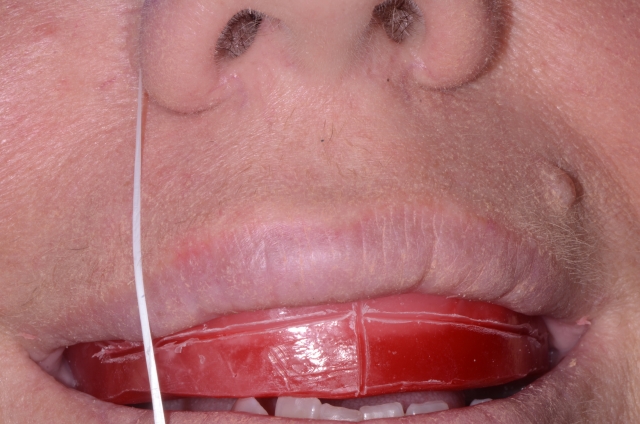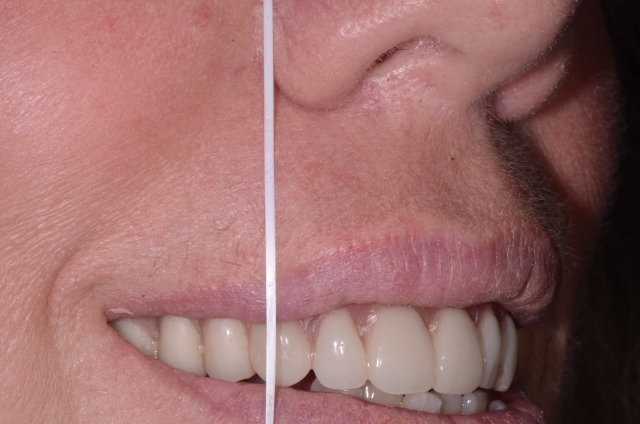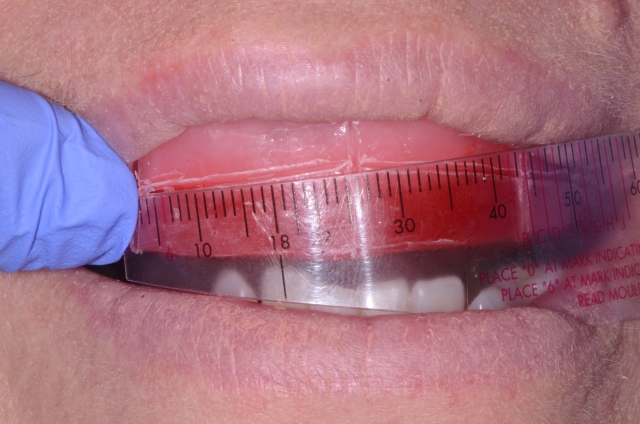Denture Tooth Selection: Easy With an Accurate Wax Occlusion Rim
I recently spoke with a young dentist that told me he made one denture in dental school. Consequently, many dentists early on in their careers might feel that their education was too light when it came to developing the skills necessary to fabricate a denture. This would include the selection and set up of the teeth.
Every dentist knows what it feels like to flip open the tooth mould guide and peruse it wondering which tooth mould to select. I know they can all start to look alike.
If a patient has their teeth or a model of their anterior teeth or even photos (which I always ask for) and wants it replicated in the denture, it’s fairly easy to match what they had. Paying attention to a patient’s esthetic needs and noticing their perception of appearance is a good starting place. Using pre-extraction records will often lead to a successful outcome for tooth selection.

Inevitably, you may have to make a denture for someone with no pre-extraction records, or a denture that has advanced wear and no way of really knowing what is the best tooth mould to choose.
You have to make sure that the teeth chosen will appropriately support the upper lip and follows the FGTP guidelines. Make sure that there is a display of the incisal edge appropriate for the patient’s age.
It is important that an accurate wax rim is developed before you start the tooth selection process. Developing the wax rim appropriately makes the anterior tooth selection easier. Just be sure that the lip is supported, the incisal edge length is determined and the high smile line is scribed in.

Next, check that the arch of the six anterior teeth fills the corners of the mouth. One quick guideline I use is to measure the circumference of your wax rim and then be sure the width of the six anterior teeth comes as close as possible to this measurement.
I always mark on the wax rim where I want the distal of the canine set. I draw an imaginary straight vertical line down the side of the nostril, down to the mouth and smile and the line should go down the middle of the canine. If necessary, you can visualize that with floss also. Then I score the wax rim 2mm posterior to my imaginary line. Utilizing the measurement of the arch circumference and where I want the distal of the canine informs me of the accuracy of the mould I am selecting.
The denture moulds come in many sizes, shapes and lengths but to start, I default to looking at the face. Is it square, round, tapering or ovoid. It’s not at all a scientific calculation but it has almost never failed me.
When you have a few appropriate moulds selected based on the measurement of the “6” width, you then have to decide the length of the central incisors.

Go back to your wax rim and get the patient to give you the highest smile line. Scribe that line and then measure the distance down to the incisal portion of the rim. The length of your central incisor should be 1mm longer than that measured distance.
Following these guidelines should make selecting the teeth much easier. You become the smile architect…take your measurements, reference your tooth mould guide and you should get really close to a setup that looks natural for the patient. You can then play with rotations and spaces if the patient wants that. Hope this helps the next time you feel dread about making a new denture.
(To learn more, check out this Spear Talk thread “Looking for Complete Denture CE.”)
Mary Anne Salcetti, DDS, PC, Spear Visiting Faculty www.maryannesalcettidds.com
SPEAR campus
Hands-On Learning in Spear Workshops
With enhanced safety and sterilization measures in place, the Spear Campus is now reopened for hands-on clinical CE workshops. As you consider a trip to Scottsdale, please visit our campus page for more details, including information on instructors, CE curricula and dates that will work for your schedule.

By: Mary Anne Salcetti
Date: June 11, 2015
Featured Digest articles
Insights and advice from Spear Faculty and industry experts



